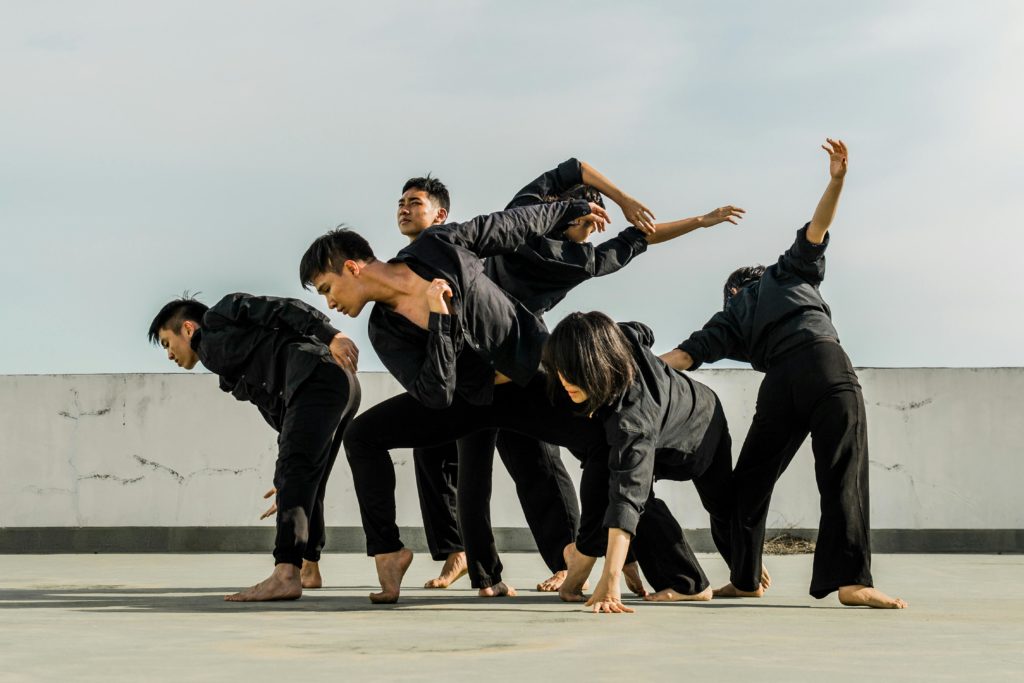Case studies in the arts and examples of success in various artistic fields, demonstrating the effectiveness of the approach.
The ActionTypes® approach has proven its effectiveness in a wide variety of artistic disciplines, allowing artists to unleash their potential, refine their practice and express their creativity with authenticity. These case studies highlight real-life situations where ActionTypes® has transformed artistic expression, fostered better reception of emotions, or improved fluidity and scenic impact.
1. A classical dancer finds fluidity in her movements
Context:
Elise, a dancer in a famous ballet company, felt blocked in the execution of some complex movements. These difficulties affected his confidence and increased the risk of injury.
Intervention:
Through the ActionTypes® analysis, Élise found that her motor preferences favoured an initial approach with rhythmic and linear gestures, While the choreographies imposed circular movements that she found binding before understanding how to adapt.
Consequence:
Élise worked with her choreographer to adapt certain sequences to her natural dynamics.
She has integrated specific exercises to strengthen her fluidity and reduce tensions.
Impact: More fluid performance and a noticeable reduction in muscle pain.
2. A conductor improves his connection with his ensemble
Context:
Jean, the conductor, was having difficulty in establishing cohesion with his musicians during rehearsals. His gestures were sometimes misinterpreted, which created tensions and slowed down the collective work.
Intervention:
ActionTypes® allowed Jean to identify her motor preferences and adapt her steering gestures to make them clearer and more consistent with her natural dynamics.
Consequence:
- Better synchronization with his orchestra.
- Reduction of gestural misunderstandings and more effective repetitions.
Impact: More fluid performance and increased satisfaction among musicians.

Crédit : Pexels / Thirdman
3. Abstract painter rediscovers his creativity
Context:
Paul, an abstract painter, was going through a phase of creative blocking. He felt limited by his usual techniques and doubted his ability to innovate.
Intervention:
The ActionTypes® analysis revealed that Paul preferred spontaneous, loose gestures, while his tools and supports limited these natural movements.
Consequence:
Paul has experimented with new formats and materials to suit his motor preferences.
He redefined his creative process by integrating more intuitive practices.
Impact: A series of innovative works that have been successful and have regained confidence in his art.
4. An actress learns to manage her emotions on stage
Context:
Sophie, a theatre actress, struggled to balance her emotional interpretation. She felt overwhelmed by some intense scenes, which affected her overall performance.
Intervention:
Working with ActionTypes®, Sophie learned to identify her emotional triggers and use centring practices that are tailored to her motor preferences.
Result:
- A better reception of his emotions during rehearsals and performances.
- More authentic performance and increased stage presence.
Impact: Praised for its ability to convey deep emotions while remaining consistent with itself.
5. A MUSICIAN OPTIMIZES HIS PLAYING THROUGH POSTURAL ADJUSTMENTS
Context:
Marc, a professional pianist, experienced chronic pain in his wrists and shoulders after long rehearsals. These difficulties affected his technical precision and endurance.
Intervention:
ActionTypes® allowed Marc to identify unnecessary tensions in his posture, related to movements that are incompatible with his motor preferences.
Consequence:
- Adopting a more natural posture and aligned with its motor dynamics.
- Integration of specific exercises to strengthen its fluidity.
Impact: Improved endurance and a significant reduction in physical pain.

Crédit : Pexels / Redhaste
7. Overall results of case studies
Artists and troupes that have adopted the ActionTypes® approach report, among others:
+35% improvement in fluidity and technical precision.
-30% of physical tensions and emotional fatigue.
+25% artistic satisfaction and connection with the public.
…
8. What these case studies reveal about ActionTypes®
Claire, classical dancer:
” The ActionTypes® analysis has changed my way of dancing, and I finally feel aligned with my movements, and that is reflected in my performance.”
Jean, conductor:
” By adapting my gestures, I have improved communication with my orchestra. We now play as one body. “
Sophie, actress:
“. This approach has helped me to better understand my emotions and turn them into a stage force. “
Conclusion: Transform your artistic practice with ActionTypes®
These case studies show that the ActionTypes® approach offers concrete means in the arts and performing. By respecting the natural dynamics of artists, it allows them to unleash their potential, improve their expression and strengthen their scenic impact.


